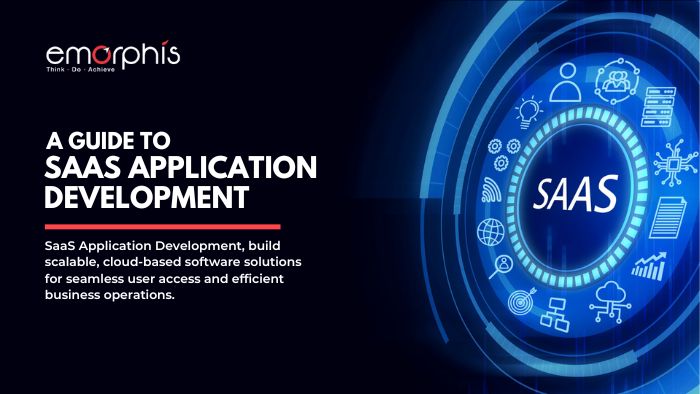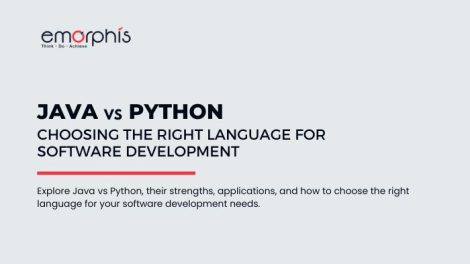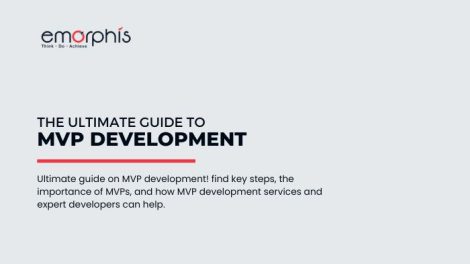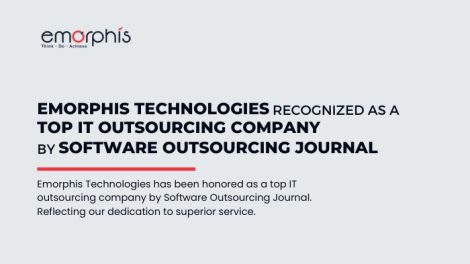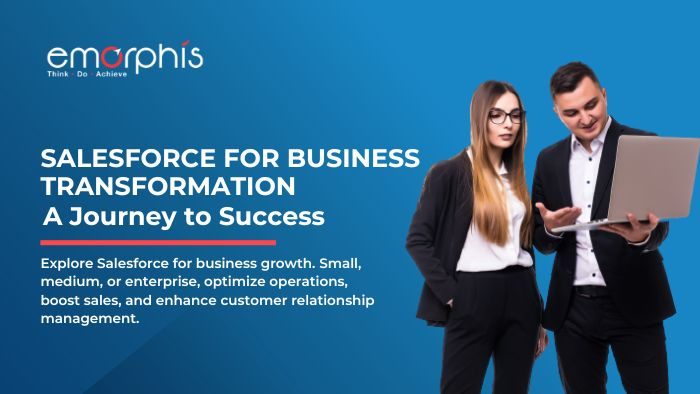In today’s digital era, Software as a Service (SaaS) has emerged as a dominant model for delivering software applications to businesses and consumers alike. SaaS applications offer numerous advantages, such as accessibility from anywhere with an internet connection, automatic updates, and cost-effectiveness. This comprehensive guide aims to delve into the intricacies of SaaS application development, providing insights, best practices, and also a step-by-step roadmap for those embarking on this transformative journey.
Why does SaaS matter?
SaaS, short for Software as a Service, is a cloud computing model that allows users to access and use software applications hosted on remote servers over the internet. Unlike traditional software, SaaS applications do not require installation on users’ devices, making them accessible via web browsers. Users typically pay for SaaS applications through a subscription-based model, which can be monthly, annually, or based on usage.
SaaS has gained prominence due to its numerous benefits, including:
- Accessibility: SaaS applications can be accessed from any location with an internet connection, fostering remote work and also collaborative efforts.
- Cost-Effective: SaaS eliminates the need for upfront software licensing and hardware costs, in fact making it an attractive option for businesses of all sizes.
- Automatic Updates: SaaS providers handle software maintenance and updates, ensuring that users always have access to the latest features and also security patches.
- Scalability: SaaS applications can easily scale to accommodate growing user bases and also evolving business needs.
- Reduced IT Burden: SaaS offloads the responsibility of infrastructure management and also maintenance from businesses to service providers.
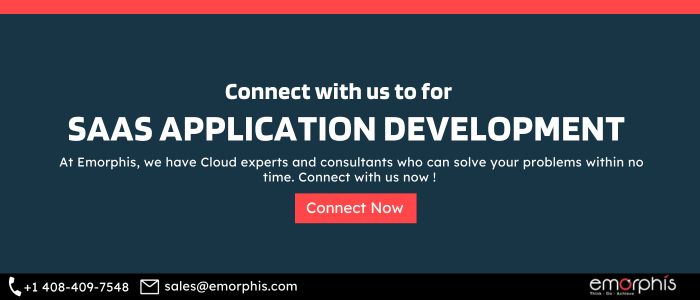
Key Components of SaaS Application Development
1. Idea Generation and Market Research
Every successful SaaS application begins with a compelling idea and a thorough understanding of the target market. Moreover, idea generation should be based on identifying real-world problems that your SaaS application can solve. Moreover, in-depth market research is crucial to validate the demand for your solution and assess the competitive landscape. As a matter of fact, this initial phase lays the foundation for the entire development process.
2. Planning and Strategy
Once you have a solid idea, it’s essential to create a detailed plan and strategy for your SaaS application. This includes defining the scope, features, and functionality of the application. Moreover, you should outline the development milestones, allocate resources, and establish timelines. In fact, having a well-defined plan helps ensure that your development project stays on track and within budget.
3. Technology Stack Selection
Selecting the right technology stack is a critical decision in SaaS application development. In fact, your technology choices will impact the scalability, performance, and security of your application. Also, it’s essential to consider factors such as the programming language, web frameworks, databases, and cloud services that align with your project’s requirements.
4. Designing User Experience (UX) and User Interface (UI)
A seamless and intuitive user experience is paramount in SaaS application development. Moreover, a well-thought-out user interface enhances user satisfaction and engagement. In fact, creating wireframes and prototypes to visualize the application’s flow and layout can help ensure a user-friendly design.
5. Development
The development phase involves writing the actual code for your SaaS application. Here, the development team takes the design and specifications and in fact, transforms them into a functional product. It’s essential to follow best coding practices and design patterns during this phase to ensure code quality and maintainability.
6. Testing and Quality Assurance
Comprehensive testing is critical to ensure that your SaaS application functions as expected and also is free from bugs and issues. This encompasses unit testing, integration testing, as well as user acceptance testing. Furthermore, thorough quality assurance processes are crucial to delivering a reliable and robust product.
7. Security Implementation
Security is a paramount concern in SaaS application development. It’s imperative to implement robust security measures to protect user data and ensure compliance with data privacy regulations. Regular updates and patching of security vulnerabilities are also essential aspects of security implementation.
Check more details on Cloud Application Security: Safeguarding Your Digital Frontier
8. Scalability Planning
Designing your SaaS application with scalability in mind is vital for accommodating growth. In fact, as your user base expands, your application should be capable of handling increased traffic and data loads without performance degradation. Scalability planning should be an integral part of the development process.
9. Deployment and Hosting
Once your SaaS application is ready, it needs to be deployed on reliable hosting infrastructure or cloud platforms. Additionally, setting up monitoring tools to track application performance is crucial for proactively addressing any issues that may arise.
10. Customer Support and Maintenance
Providing excellent customer support is essential for user satisfaction and retention. Additionally, ongoing maintenance is necessary to keep your SaaS application running smoothly. Continuously updating and improving the application based on user feedback and emerging technologies is also part of this phase.
11. Marketing and Sales Strategy
Developing a robust marketing and sales strategy is essential to promote your SaaS application and acquire customers. Consider pricing models, such as subscription plans or freemium options, to attract and retain users.
12. Data Analytics and Reporting
Implementing data analytics and reporting features can help users gain valuable insights from their data. This not only enhances the usefulness of your SaaS application but also provides an additional selling point.
13. Compliance and Regulations
Ensuring that your SaaS application complies with relevant legal and also regulatory requirements is crucial. In fact, depending on your target market and industry, compliance may include adherence to GDPR, HIPAA, or other data protection regulations.
14. Feedback and Iteration
Continuous feedback from users is invaluable for improving your SaaS application. Regularly gather user feedback and also iterate on your application to enhance its features and address user needs. Moreover, this iterative process should be ongoing to keep your application competitive and aligned with market demands.
Before moving ahead let’s bookmark an article on Demystifying Software Development Challenges, Revolutionizing Industries with Next-Gen Solutions
Building a Successful SaaS Application: Best Practices
Developing a SaaS application is a complex endeavor, but following best practices can increase your chances of success.
Let’s explore the best practices associated with building a successful SaaS application:
a. User-Centric Design
Prioritize user experience and interface (UI/UX) design. A well-designed and intuitive interface enhances user satisfaction and also encourages engagement. Conduct user research to understand their needs and preferences, and also iterate on the design based on feedback.
b. Cloud Technology Adoption
Embrace cloud computing platforms like AWS (Amazon Web Services), Azure, or Google Cloud. These platforms offer scalability, reliability, and cost-efficiency, which are also essential for SaaS applications. Leverage cloud services for data storage, computing power, and also global distribution to ensure your application can handle growing user demands.
Connect with us for Cloud Computing Services
c. Data Security Measures
Data security is non-negotiable. Implement strong security measures, such as encryption, multi-factor authentication, and access controls, to safeguard user data against unauthorized access and breaches. In fact, regularly perform security audits and penetration testing to detect and rectify vulnerabilities.
d. Continuous Monitoring and Optimization
Implement monitoring tools and performance metrics to track your application’s performance in real time. In fact, proactively identify bottlenecks, downtime, or issues. Also, be prepared to optimize your application based on usage patterns and user feedback. Moreover, regularly update and improve your software to maintain peak performance.
e. Streamlined Onboarding
Ensure that the onboarding process for new users is seamless and also user-friendly. In fact, provide clear guidance and tutorials to help users get started quickly. An effective onboarding process reduces user frustration and also lowers the likelihood of churn.
f. Scalability from Day One
Design your application’s architecture with scalability in mind, even if you have a small user base initially. Scalability ensures that your application can handle increased traffic and data loads as your user base grows. Consider microservices architecture, containerization, and also serverless computing to facilitate scalability.
Check with our Cloud Advisory Services
g. Clear Pricing Models
Offer transparent and straightforward pricing models. Users should easily understand what they are paying for and what value they receive. Consider different pricing tiers to cater to various user needs, including free trials, basic plans, and premium plans with additional features.
h. Data Analytics and Insights
Implement data analytics and reporting features within your application. This allows users to gain valuable insights from their data. Analytics not only enhance the usefulness of your application but also provide a selling point to potential customers.
i. Responsive Customer Support
Provide responsive and efficient customer support. Address user inquiries and issues promptly to ensure a positive user experience. Consider using support ticketing systems, chatbots, and knowledge bases to streamline customer support.
j. Regular Updates and Maintenance
Continuously update and maintain your SaaS application. Stay vigilant about security updates, bug fixes, and feature enhancements. Keep users informed about updates and improvements to demonstrate your commitment to their satisfaction.
k. Market Research and Competition Analysis
Stay informed about market trends and changes in user preferences. Regularly analyze the competitive landscape to identify opportunities and threats. Be ready to adapt your application and strategy based on market dynamics.
l. User Feedback Integration
Actively seek user feedback through surveys, reviews, and direct communication channels. Use this feedback to drive iterative development and improvement. Involve users in the decision-making process for new features and enhancements whenever possible.
m. Compliance and Regulations
Ensure that your SaaS application complies with relevant legal and industry-specific regulations, such as GDPR, HIPAA, or PCI DSS. Stay updated on changing regulations and adjust your practices accordingly. By following these best practices, you can enhance the chances of building a successful SaaS application that not only attracts users but also retains them over the long term. User satisfaction, security, scalability, and adaptability are key pillars in the journey to SaaS success.
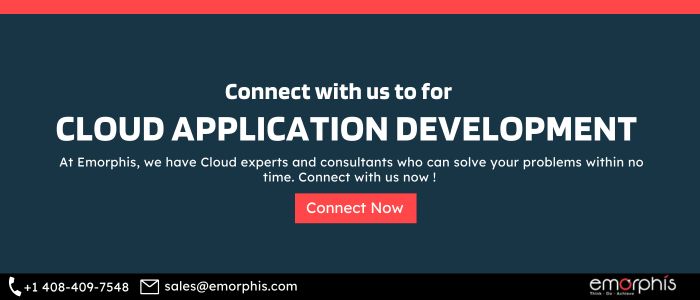
Why choose Emorphis Technologies for your SaaS application development?
Choosing a software development company like Emorphis Technologies for your SaaS application development can be a crucial decision that impacts the success of your project. Emorphis Technologies is a well-known IT services company based in India that offers various software development services, including SaaS application development. When considering Emorphis Technologies or any other development company, you should evaluate them based on various factors, including their expertise, track record, and alignment with your project’s requirements. Here are some reasons why you might consider Emorphis Technologies:
A. Expertise and Experience
Emorphis Technologies may have a team of experienced developers and engineers with expertise in SaaS application development. They may have worked on a variety of projects, allowing them to bring a wealth of knowledge to your project.
B. Technical Competence
They might have a strong technical skill set, including proficiency in programming languages, frameworks, and tools commonly used in SaaS development.
C. Proven Track Record
Research their portfolio to see if they have successfully completed similar SaaS projects in the past. This can offer valuable insights into their capabilities and the caliber of their work.
D. Customization and Scalability
Emorphis Technologies might offer tailored solutions to meet your specific requirements. They should be capable of building a scalable SaaS application that can grow with your business.
E. Quality Assurance
A reputable development company like Emorphis Technologies should have a robust quality assurance process in place to ensure that the software they deliver is of high quality and free of critical defects.
F. Security Measures
They may have security protocols and practices in place to protect your application and user data. Security is particularly important for SaaS applications, which handle sensitive information.
G. Communication and Collaboration
Successful development projects rely on effective communication as a fundamental component. Evaluate their ability to collaborate with your team, understand your vision, and provide regular updates on the project’s progress.
H. Cost-Effective Solutions
Emorphis Technologies may offer competitive pricing for its services, making it a cost-effective choice for your SaaS development needs.
I. Adaptability and Innovation
A good development partner should be open to new technologies and innovative solutions. They should be able to adapt to changing project requirements and market trends.
J. Support and Maintenance
Ask about the support and maintenance services they provide after the project’s launch. A reliable partner should provide ongoing assistance and updates as needed.
H. Compliance and Regulations
Ensure that Emorphis Technologies is well-versed in compliance with relevant industry regulations and can help you meet any legal requirements for your SaaS application.
Before making a decision, it’s essential to have a detailed discussion with Emorphis Technologies or any other potential development partner. Share your project requirements and expectations to assess how well they can align with your goals and deliver the SaaS application you envision. Additionally, consider obtaining multiple quotes and proposals to compare options and make an informed choice for your SaaS application development.

The SaaS Revolution: A Continuous Journey
In conclusion, SaaS application development is a dynamic and continuous journey. From ideation and planning to deployment and ongoing maintenance, each phase requires careful consideration and execution. Moreover, the SaaS landscape is ever-evolving, with emerging technologies and changing user expectations driving innovation.
To succeed in the SaaS space, staying agile, adapting to market shifts, and listening to user feedback is essential. Furthermore, the collaborative effort of a skilled development team, along with a well-defined strategy, is key to turning your SaaS vision into a reality. Remember that your SaaS application’s success is not just about the code; it’s about solving real problems for users and delivering value in the digital age.
In fact, the journey of SaaS application development is not just a technological one; it’s a transformative one that can reshape industries, empower businesses, and enhance the lives of users across the globe. As a matter of fact, by embracing SaaS, you embark on a journey of innovation, scalability, and limitless possibilities in the digital landscape.
Don’t miss out to read the Top 10 Trends in Cloud Application Development



